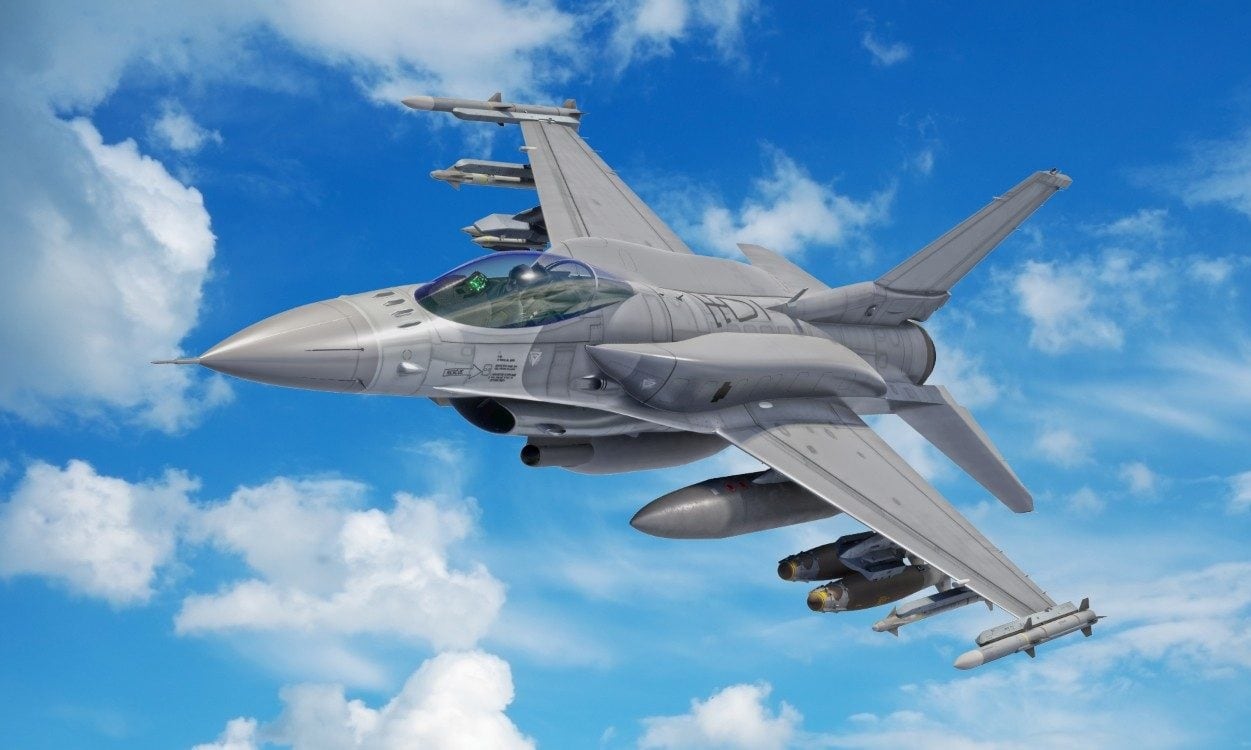Whilst the Lockheed Martin’s F-16 fighter jet (manufactured by General Dynamics before 1993) is officially known to the general public as the Fighting Falcon, its crew dogs (pilots, weapons systems officers [“Wizzos”], and maintainers alike) affectionately dub it “The Viper” in honor of the fighter spacecraft in the TV series Battlestar Galactica (the original series starring Dirk Benedict and Lorne Greene, that is, not the 1990s reboot starring Edward James Olmos). So then, perhaps it is poetically fitting that the latest edition of the Viper has the alphanumeric designation of F-16V. Let’s take a look at what new and improved special features this vivacious Viper – more of a vicious virus from the viewpoint of the villains whom it has verily vanquished – has to offer.
Starting in Singapore … to Trouble Over Taiwan
Lockheed Martin first unveiled plans for the F-16V at the 2012 Singapore Airshow. The upgrades include an AN/APG-83 active electronically scanned array (AESA) radar – which provides the Viper with fifth-generation fighter radar capabilities by leveraging hardware and software commonality with F-22 and F-35 AESA radars – a new mission computer and electronic warfare suite, automated ground collision avoidance system, and various cockpit improvements. In addition, there is a reduced radar cross-section (RCS) and a 50 percent greater airframe structural longevity than in previous models.
This package deal is further sweetened in terms of dollars and sense as an option on current production F-16s that can be retrofitted to most in-service F-16s. The Taiwanese Air Force, officially known as the Republic of China Air Force (ROCAF), already began applying these upgrades to its fleet of 144 F-16 A/B models back in 2017 with a targeted completion for 2023; indeed, as of November 2021, the ROCAF has already deployed 64 of these updated airframes, which can be seen as fortuitous timing in light of renewed concerns that Vladimir Putin’s invasion of Ukraine will in turn speed up the timeframe for Red China’s feared prospective invasion of Taiwan.
However, as my 19FortyFive colleague Caleb Larson points out, these improvements still might not be sufficient: “Though the F-16V Viper is undoubtedly a vast improvement over older F-16s, it is still very much a fourth-generation fighter that would, in a conflict scenario, go head-to-head against some of China’s best fighters. In an aerial fight against China’s J-20 stealth fighter, the F-16 Viper might not come out on top.” [emphasis added]
Allies Around the World Are Lining Up to Buy It
Meanwhile, fourth- vs. fifth-generation concerns notwithstanding, there is no shortage of additional U.S. allies eager to purchase the new Viper. Bahrain became the first nation to buy brand new, from scratch (as opposed to retrofits to pre-existing warbirds) F-16Vs back in June 2018, when the Royal Bahraini Air Force announced the purchase of 16 of the new Block 70 airframes, which would almost certainly give the RBAF a leg up in case of a shooting war with Iran and the latter country’s aging but still deadly F-14 Tomcat fleet. On the NATO side of the fence, in 2017 Greece announced its plans to upgrade its arsenal of 84 F-16C/D Block 52+ and Block 52+ Advanced (Block 52M) to the latest V (Block 70/72) variant in October 2017, whilst during the following year Slovakia announced its plan to purchase 14 F-16 Vs to replace its MiG-29 Fulcrums, thus “cutting off” its longstanding relationship with the Russian defense industry.
It will be interesting to see if, when, and how many other foreign customers, from Iraq – for whom the F-16 ushered in the veritable Renaissance of the post-Saddam era Iraqi Air Force, and which, from a personal standpoint, I’m proud to say I contributed to during my contract stint at Balad Airbase from April 2015 to December 2018 – to Israel, to Pakistan, to the United Arab Emirates (UAE), to name but a few examples, decide to cast their bids for the latest and greatest Viper. Stay tuned …
Christian D. Orr is a former Air Force officer, Federal law enforcement officer, and private military contractor (with assignments worked in Iraq, the United Arab Emirates, Kosovo, Japan, Germany, and the Pentagon). Chris holds a B.A. in International Relations from the University of Southern California (USC) and an M.A. in Intelligence Studies (concentration in Terrorism Studies) from American Military University (AMU). He has also been published in The Daily Torch and The Journal of Intelligence and Cyber Security.

